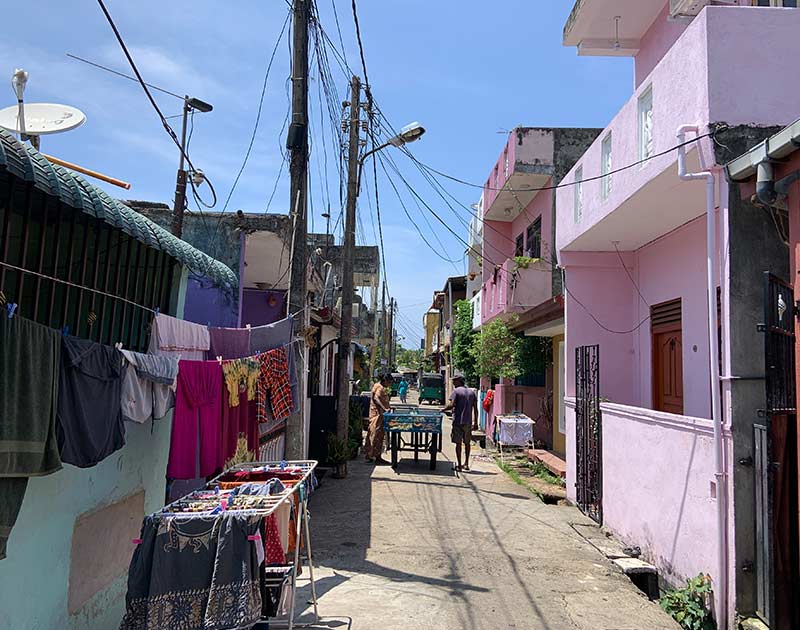
- Home
- Knowledge Insights
- Attracting Good FDI Starts with Designing Good Incentives Regimes
Sri Lanka is on a renewed push to attract foreign direct investment (FDI) following a poor performance in the last decade, post-war. Fiscal incentives regimes have changed from time to time, laws and regulations have been introduced, investment promotions missions have been held in major capitals. Yet, attracting FDI remains a struggle, amidst heightened competition from regional competitor locations. In this interview, former Deloitte consultant Danindu Udalamaththa outlines some key areas for Sri Lanka to focus on and learn from. He draws from his experience advising global clients on the investor side, and argues that to attract good investment, Sri Lanka needs to design good incentives frameworks. Until early this year, Danindu worked with the Deloitte US Multistate Tax Service (Credits, Incentives & Economic Development Group) and the Global Investment and Innovation Incentives Practice. He has extensive experience working with global clients, borders, and industries. He has a MPA specializing in Economic and Financial Policy from Cornell University and has a Masters in Agribusiness and Applied Economics from North Dakota State University.
SFF: Danindu, we like to think that Sri Lanka is an attractive FDI location for a variety of reasons. But having worked on the international client side of things, you have a good sense of what investors often look for when making location decisions. In your view, what are some of the key decision factors for foreign investors?
DU: For a company, investing on a location means spending large sums on tangible assets that in many occasions will stay there for a longer horizon. So, companies carefully consider how they can optimize the utilization of these assets to reach their operational goals. [When an investor considers a location to invest there are a number of key factors considered such as supply chain management, access to labor and resources, geographical distribution, and access to markets, etc. These factors determine the operational success of the company from the potential investment. When an investor considers a location to invest there are a number of key factors considered such as how easily they can access the material for production, the availability of qualified employees and necessary resources, and ease of entering the markets that a company wants to sell their products, etc. The ease of access can be obtained through factors such as trade agreements like EU and NAFTA or it can simply be the distance. These factors determine how well the new addition fits into the operations of the company.
Beyond these factors, companies look into a second set of factors and ask themselves – ‘what are the added benefits of this location?’. These factors include credits and other incentive regimes relating to the investment, regulatory environment, economic stability, and the ease with which they can establish negotiations with the authorities. These factors determine what is the most beneficial location to invest among the potential candidates.
In my experience, the first set of factors determine the region which a company would invest in and the second set of factors determine the specific location or country they will invest in. As we have seen, there is increased competition among governments/state level authorities on the second set of factors. In my opinion, Sri Lanka is in a highly advantageous position when it comes to the first set of factors, but is facing extreme competition within the region when it comes to the second set of factors.
I think a primary concern with the incentives available within that country is the historic success and efficiency of similar companies in securing them. Because there is a cost for a company to even go through the process – they will conduct a cost-benefit analysis prior to the initial approach. Additionally, a company will look into the economic stability of the country by evaluating factors such as inflation rates, unemployment rates and exchange rates. They will also be looking into labor market conditions such as cost of labor, availability of required talent and current labor laws.
SFF: Your expertise was primarily in the US, looking at federal and state incentives regimes in advising clients. So, how much of that applies more generally, to countries?
DU: I think the US is a unique case when it comes to their incentives regimes because US states compete to attract investments in the same fashion that countries compete to attract investments. Globally, countries have a holistic approach through institutions similar to BOI in Sri Lanka and each US State operates its own entity to attract investments. In my opinion, this is mostly due to the availability of large capital stocks within the country and the governing structure that allows states to compete.
I believe that the general nature of the job remains the same whether its state level operations or the global operations. Since I worked in state level through the multistate practice and in the global level through global investments practice I feel that the nature of the work is very similar in both levels except for a few key differences. Usually the state level opportunities are fixed and there are not many opportunities to negotiate. However, if you look at the structure of the benefits and requirements they are quite similar. Therefore, the essence of the work remains constant regardless of the regulatory body that we are working with. Within my client engagements, I conducted data analyses, cost-benefit analyses, scenario analyses and projections to identify the most beneficial opportunities for clients among US states and internationally. In my opinion, the nature of the work will remain the same although the application might be different depending on the engagement.


